

United States Capitol
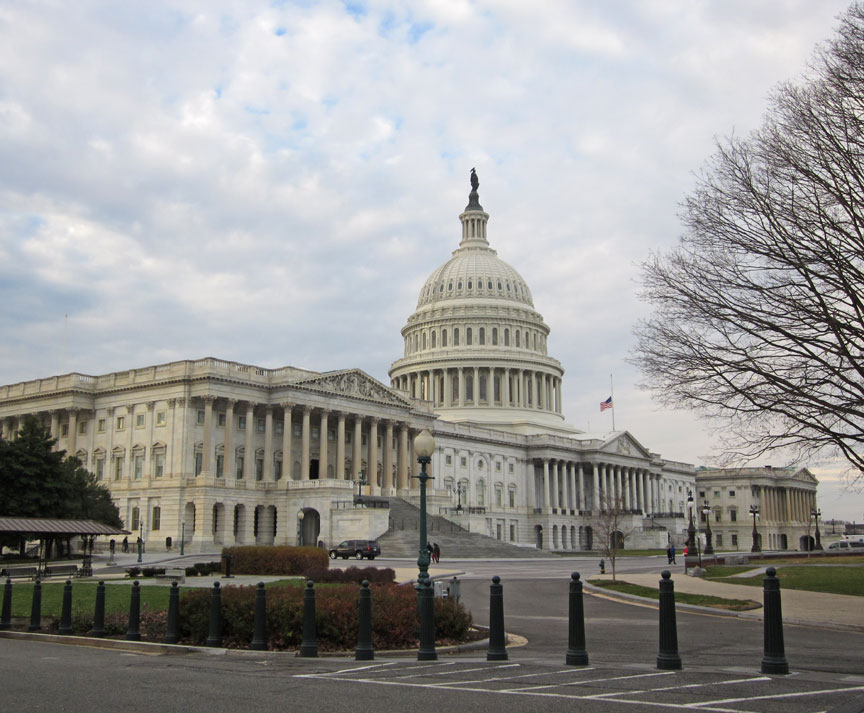
United States Capitol
The United States Capitol is the meeting place of the United States Congress, the legislature of the federal government of the United States. Located in Washington, D.C., it sits atop Capitol Hill at the eastern end of the National Mall. Though it has never been the geographic center of the federal district, the Capitol is the origin by which both the quadrants of the District are divided and the city was planned. Officially, both the east and west sides of the Capitol are referred to as "fronts". Historically, however, only the east front of the building was intended for the arrival of visitors and dignitaries. Like the federal buildings for the executive and judicial branches, it is built in the distinctive neoclassical style and has a white exterior.
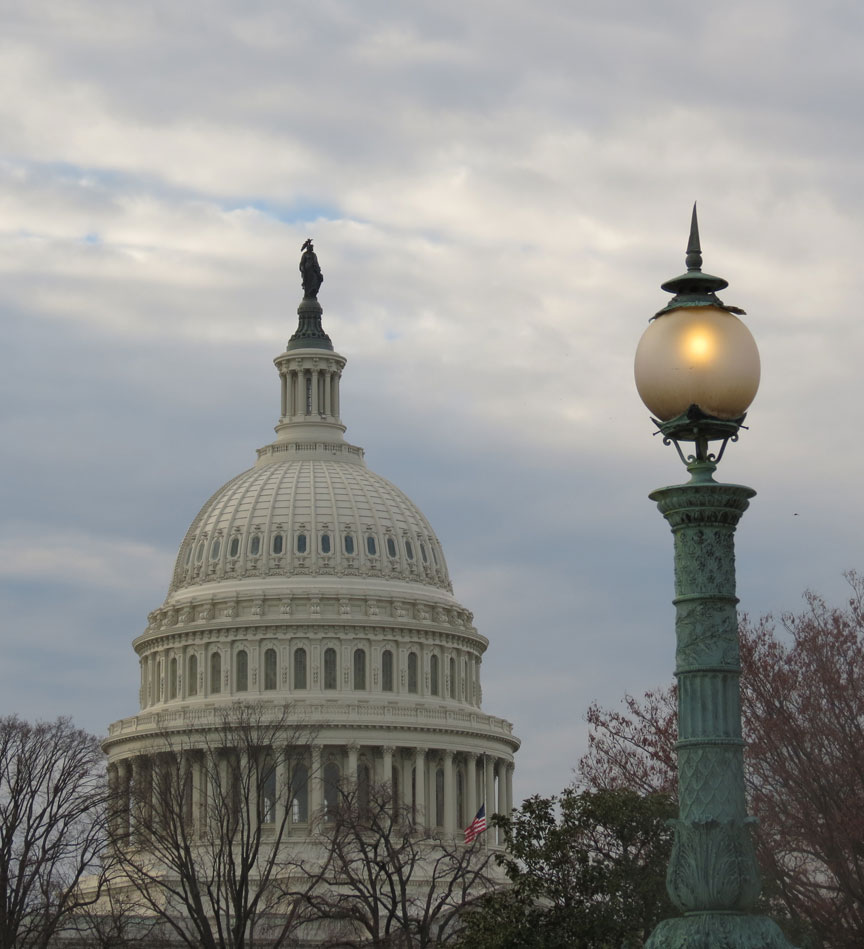
By 1850, it became clear that the Capitol could not accommodate the growing number of legislators arriving from newly admitted states. A new design competition was held, and President Millard Fillmore appointed Philadelphia architect Thomas U. Walter to carry out the expansion. Two new wings were added – a new chamber for the House of Representatives on the south side, and a new chamber for the Senate on the north.
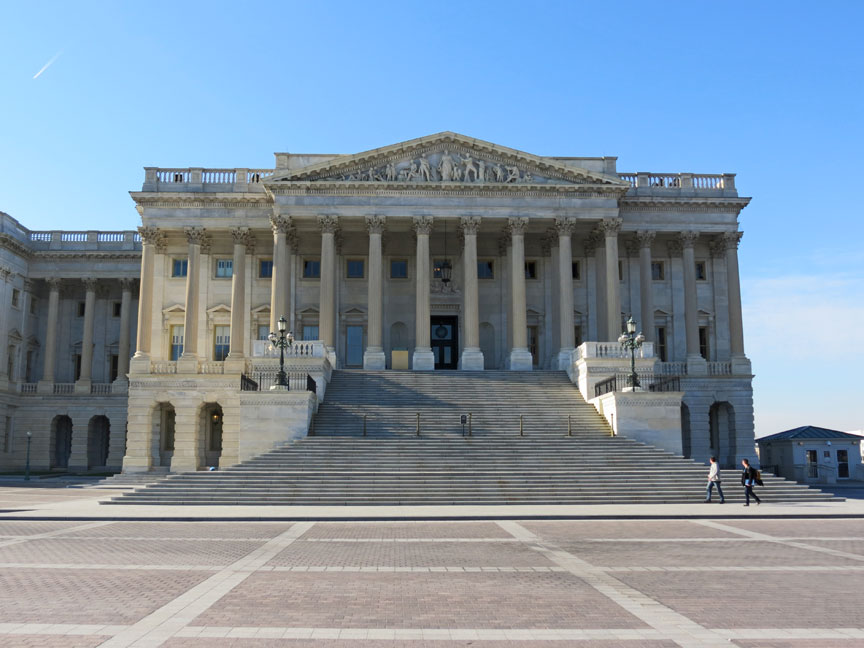
Senate
When the Capitol was expanded in the 1850s, some of the construction labor was carried out by slaves "who cut the logs, laid the stones and baked the bricks". The original plan was to use workers brought in from Europe; however, there was a poor response to recruitment efforts, and African Americans—free and slave—comprised the majority of the work force.
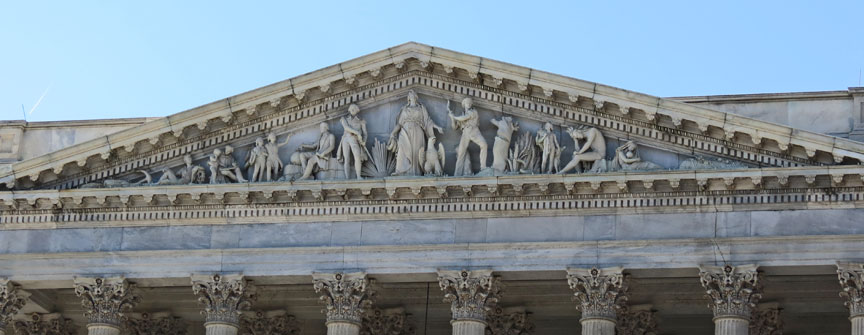
The 1850 expansion more than doubled the length of the Capitol, dwarfing the
original, timber-framed 1818 dome. In 1855, the decision was made to tear it
down and replace it with the "wedding-cake style" cast-iron dome that stands
today. Also designed by Walter, the new dome stood three times the height of the
original dome and 100 feet (30 m) in diameter, yet had to be supported on the
existing masonry piers. Like Mansart's dome at Les Invalides (which he had
visited in 1838), Walter's dome is double, with a large oculus in the inner
dome, through which is seen The Apotheosis of Washington painted on a shell
suspended from the supporting ribs, which also support the visible exterior
structure and the tholos that supports Freedom, a colossal statue that was added
to the top of the dome in 1863. The weight of the cast iron for the dome has
been published as 8,909,200 pounds (4,041,100 kg).
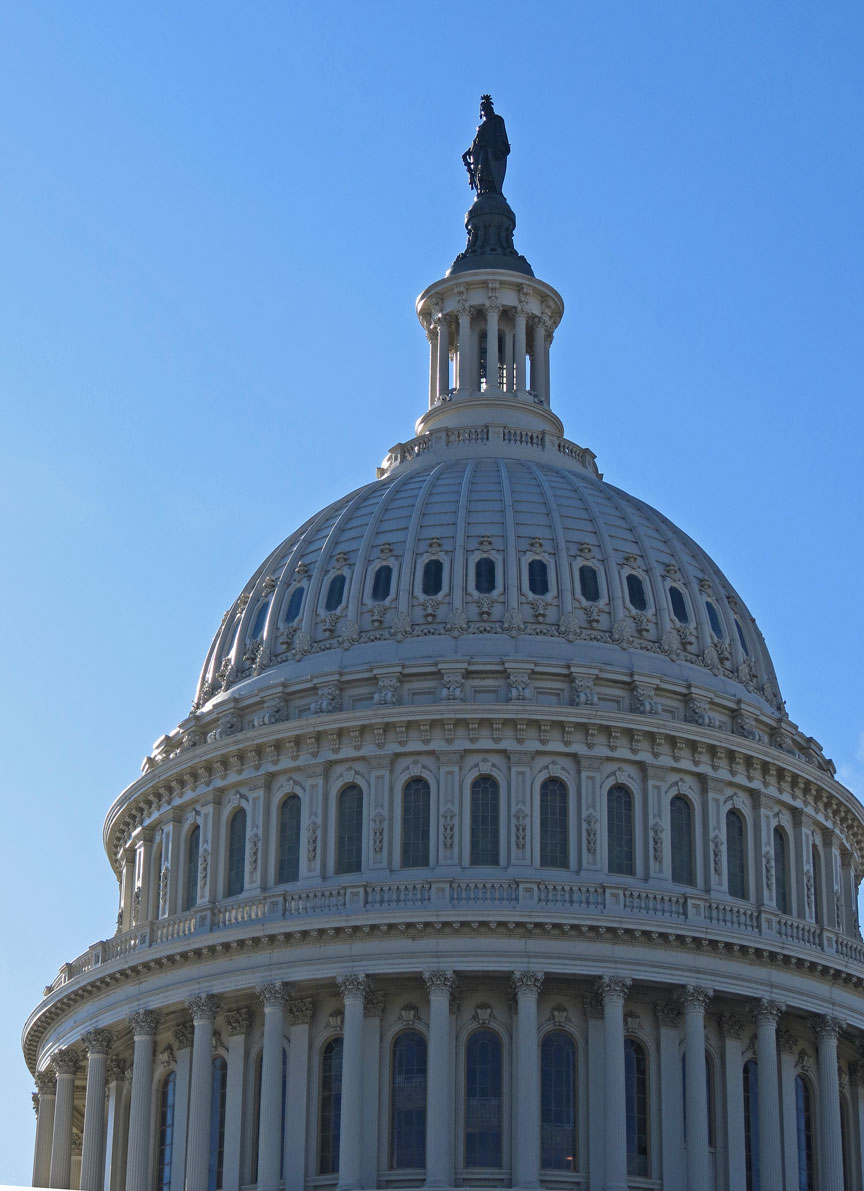
When the Capitol's new dome was finally completed, its massive visual weight, in
turn, overpowered the proportions of the columns of the East Portico, built in
1828. The East Front of the Capitol building was rebuilt in 1904, following a
design of the architects Carrère and Hastings, who also designed the Senate and
House office buildings.
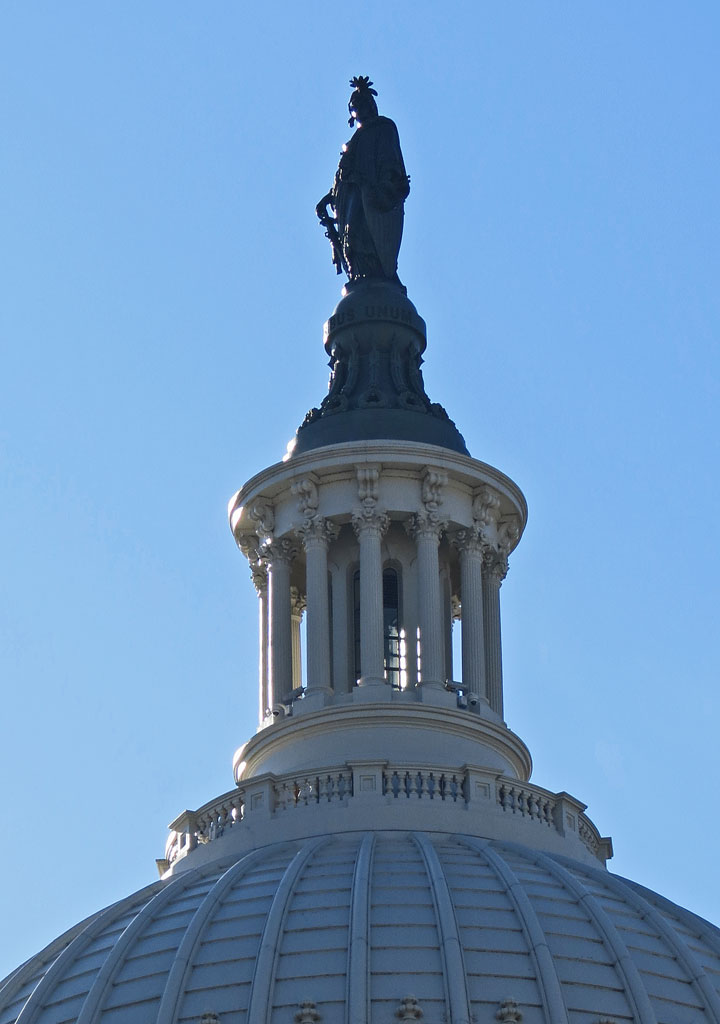
The next major expansion to the Capitol started in 1958, with a 33.5 feet (10.2
m) extension of the East Portico. During this project, the dome underwent its
last restoration. A marble duplicate of the sandstone East Front was built 33.5
feet (10.2 m) from the old Front. (In 1962, a connecting extension incorporated
what formerly was an outside wall as an inside wall.) In the process, the
Corinthian columns were removed. It was not until 1984 that landscape designer
Russell Page created a suitable setting for them in a large meadow at the
National Arboretum as the National Capitol Columns, where they are combined with
a reflecting pool in an ensemble that reminds some visitors of Persepolis.
Besides the columns, hundreds of blocks of the original stone were removed and
are stored behind a National Park Service maintenance yard in Rock Creek Park.
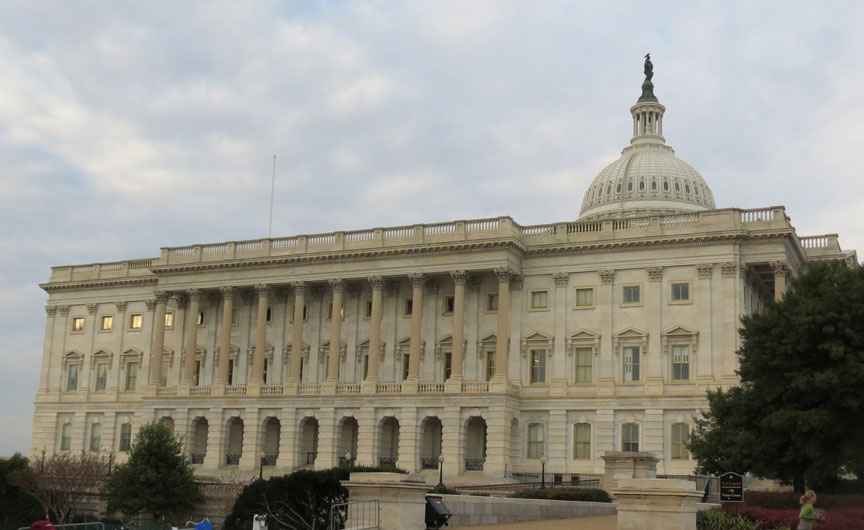
House Chamber
On December 19, 1960, the Capitol was declared a National Historic Landmark by the National Park Service. The building was ranked No.6 in a 2007 survey conducted for the American Institute of Architects' list of "America's Favorite Architecture". The Capitol draws heavily from other notable buildings, especially churches and landmarks in Europe, including the dome of St. Peter's Basilica in the Vatican and St. Paul's Cathedral in London. On the roofs of the Senate and House Chambers are flagpoles that fly the U.S. flag when either is in session. On September 18, 1993, to commemorate the Capitol's bicentennial, the Masonic ritual cornerstone laying with George Washington was reenacted. Strom Thurmond was one of the Freemason politicians who took part in the ceremony.
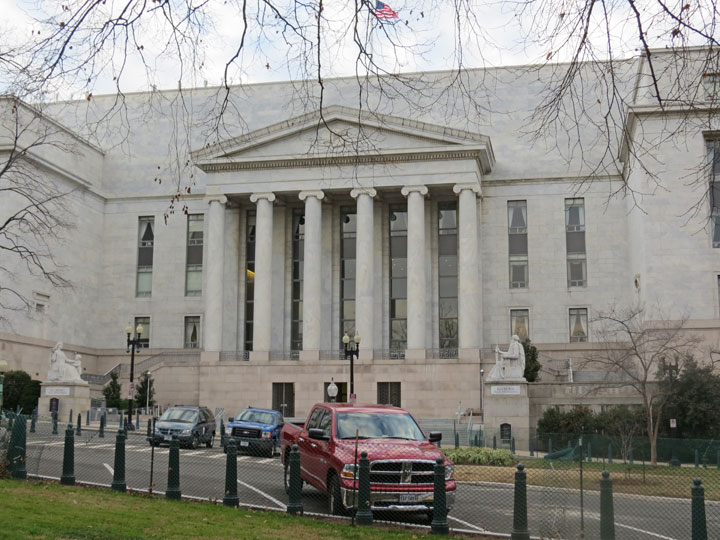
entrance to Statuary Hall
former House of Representatives
On June 20, 2000, ground was broken for the Capitol Visitor Center, which subsequently opened on December 2, 2008. From 2001 through 2008, the East Front of the Capitol (site of most presidential inaugurations until Ronald Reagan began a new tradition in 1981) was the site of construction for this massive underground complex, designed to facilitate a more orderly entrance for visitors to the Capitol. Prior to the center being built, visitors to the Capitol had to queue on the parking lot and ascend the stairs, whereupon entry was made through the massive sculpted Columbus Doors, through a small narthex cramped with security, and thence directly into the Rotunda. The new underground facility provides a grand entrance hall, a visitors theater, room for exhibits, and dining and restroom facilities, in addition to space for building necessities such as an underground service tunnel.

Senate
$20 million in work around the base of the dome was done, and before the August 2012 recess, the Senate Appropriations Committee voted to spend $61 million to repair the exterior of the dome, which has at least 1,300 cracks that have led to rusting inside. The House wants to spend less on government operations, making it unlikely the money will be approved.
Text from Wikipedia

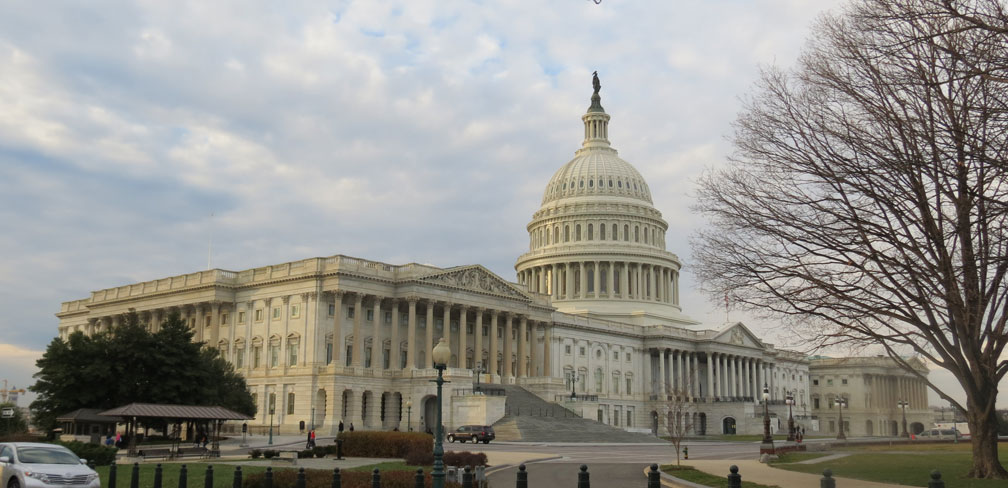
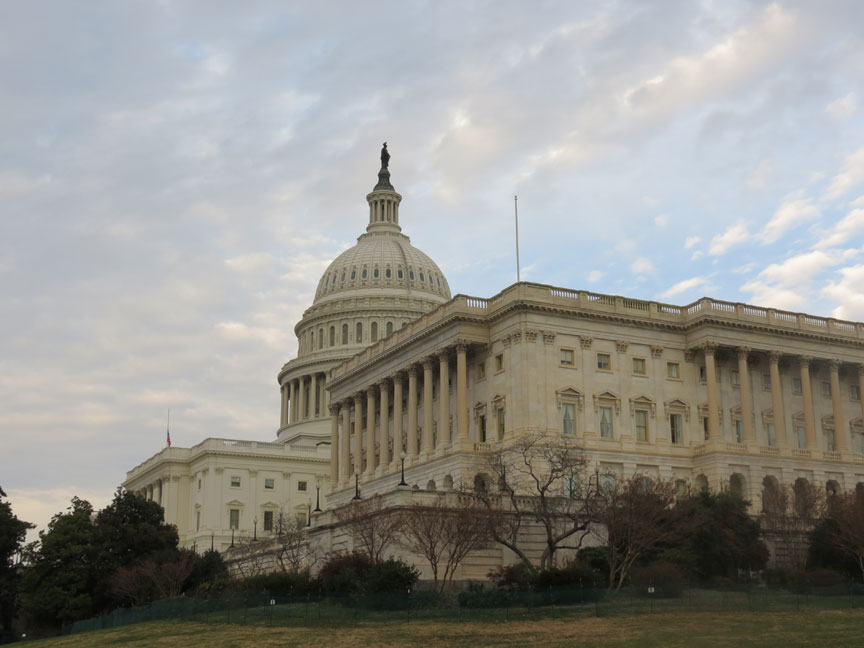

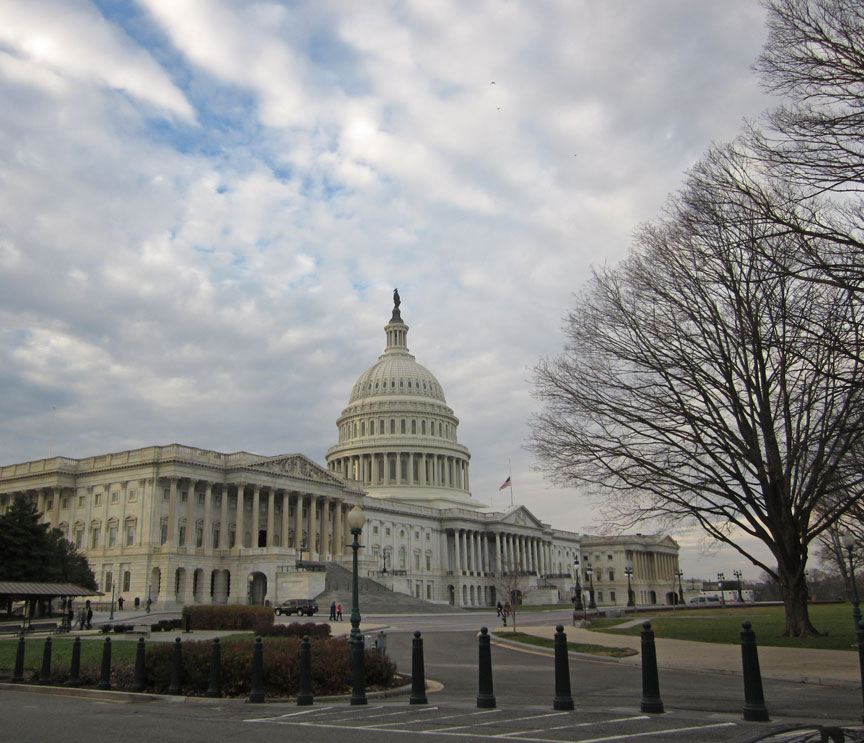
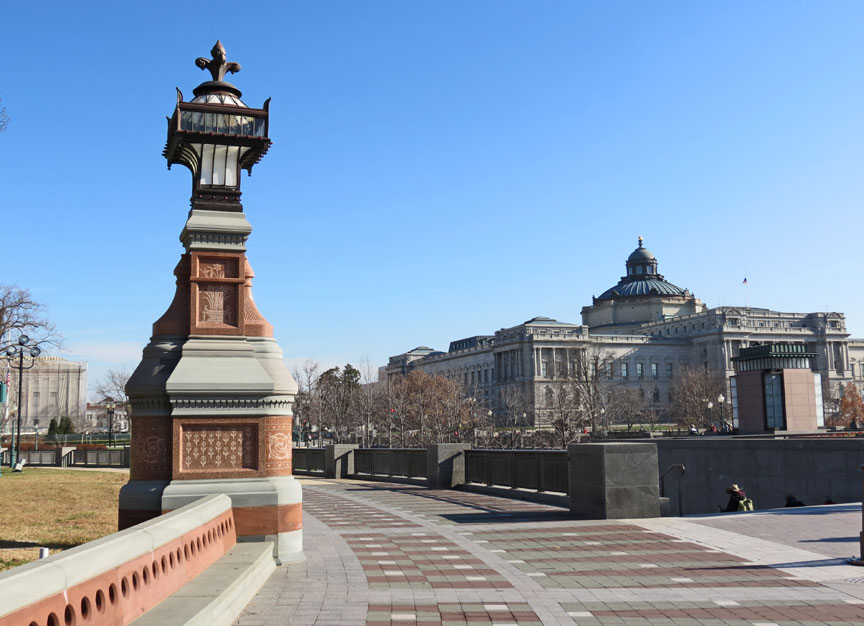
Library of Congress
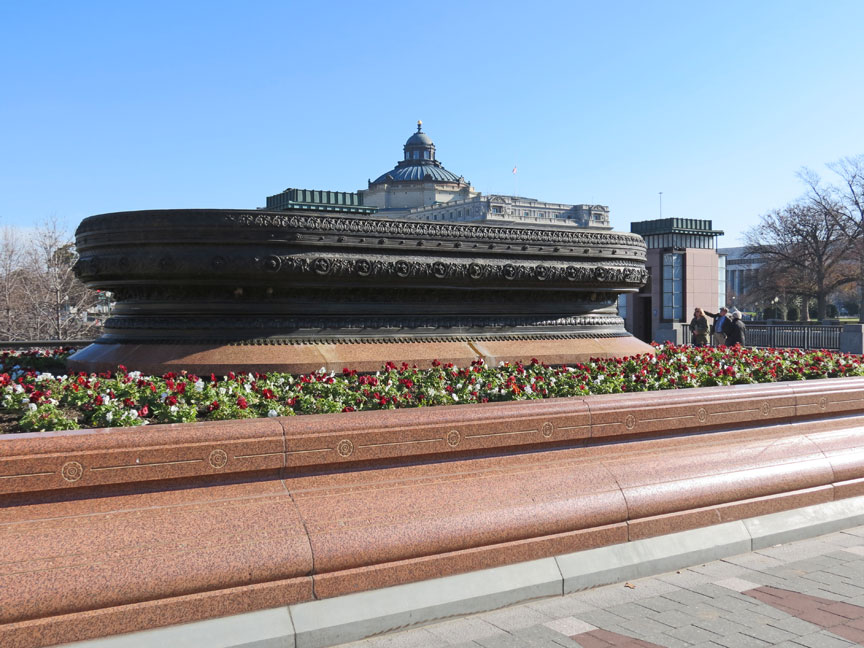
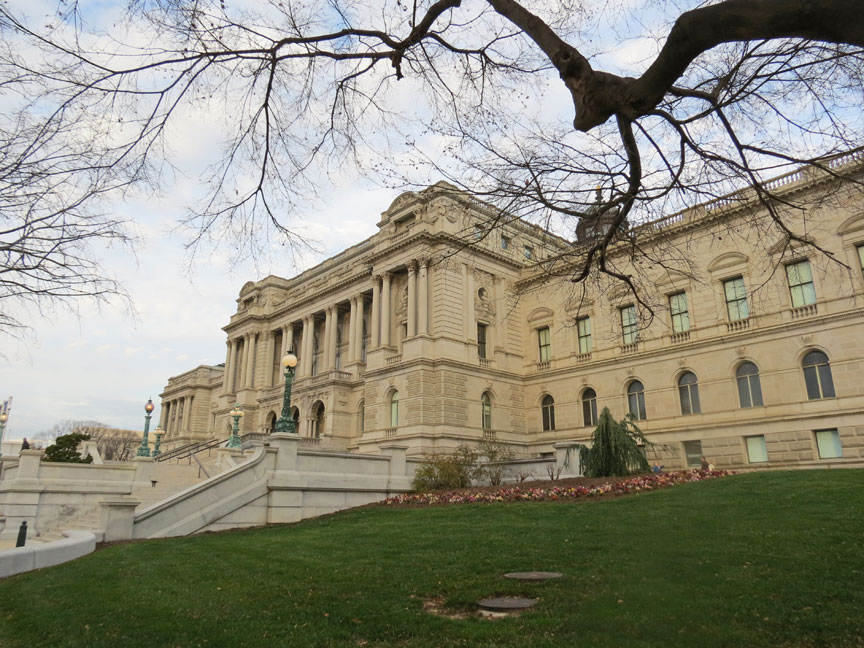
Library of Congress